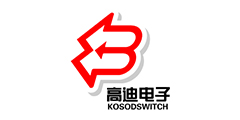HDMI Connector Introduction

HDMI Connector (High-Definition Multimedia Interface)
HDMI is a compact audio/video interface for transferring uncompressed video data and compressed/uncompressed digital audio data from a HDMI-compliant device ("the source device") to a compatible computer monitor, video projector, digital television, or digital audio device. HDMI is a digital replacement for existing analog video standards.
There are a number of HDMI-standard cable connectors available, each of which can be used for any uncompressed TV or PC video format, including standard, enhanced, high definition, and 3D video signals; up to 8 channels of compressed or uncompressed digital audio; a CEC (Consumer Electronics Control) connection; and an Ethernet data connection. HDMI implements the EIA/CEA-861 standards, which define video formats and waveforms, transport of compressed, uncompressed, and LPCM audio, auxiliary data, and implementations of the VESA EDID.
The CEC allows HDMI devices to control each other when necessary and allows the user to operate multiple devices with one remote control handset. Because HDMI is electrically compatible with the CEA-861 signals used by digital visual interface (DVI), no signal conversion is necessary, nor is there a loss of video quality when a DVI-to-HDMI adapter is used. As an uncompressed CEA-861 connection, HDMI is independent of the various digital television standards used by individual devices, such as ATSC and DVB, as these are encapsulations of compressed MPEG video streams (which can be decoded and output as an uncompressed video stream on HDM). Production of consumer HDMI products started in late 2003. In Europe either DVI-HDCP or HDMI is included in the HD ready in-store labeling specification for TV sets for HDTV, formulated by EICTA with SES Astra in 2005. HDMI began to appear on consumer HDTV camcorders and digital still cameras in 2006. As of January 8, 2013, which is ten years after the release of the first HDMI specification, over 3 billion HDMI devices have been sold.
Specifications
The HDMI CONNECTOR specification defines the protocols, signals, electrical interfaces and mechanical requirements of the standard. The maximum pixel clock rate for HDMI 1.0 was 165 MHz, which was sufficient to support 1080p and WUXGA (1920×1200) at 60 Hz. HDMI 1.3 increased that to 340 MHz, which allows for higher resolution (such as WQXGA, 2560×1600) across a single digital link. An HDMI connection can either be single-link (type A/C) or dual-link (type B) and can have a video pixel rate of 25 MHz to 340 MHz (for a single-link connection) or 25 MHz to 680 MHz (for a dual-link connection). Video formats with rates below 25 MHz (e.g., 13.5 MHz for 480i/NTSC) are transmitted using a pixel-repetition scheme.
- +1 Like
- Add to Favorites
Recommend
- Kinghelm HDMI Connector KH-HDMI-19P-Cu Transmits High-Quality Uncompressed Audio and High-Resolution Video Signals Through a Single Cable
- Kinghelm HDMI Connectors KH-HDMI-0020: A Key Component in High-Quality Audio and Video Transmission
- The Ultimate HDMI Solution: Kinghelm‘s KH-HDMI-0008 Connector
- Development Trend of HDMI Connector
- What are the Three Common Connectors?
- Exploring HDMI Interfaces: Perfect Transmission of Digital Audio and Video
- YINT‘s ESD0524P ESD Protection Diode Design with Only 0.5mm Pitch to ESD Protection Circuits for HDMI
- USB Connector History
This document is provided by Sekorm Platform for VIP exclusive service. The copyright is owned by Sekorm. Without authorization, any medias, websites or individual are not allowed to reprint. When authorizing the reprint, the link of www.sekorm.com must be indicated.






























































































































































































































































































































































































































































































































































































































































































































































































































































































